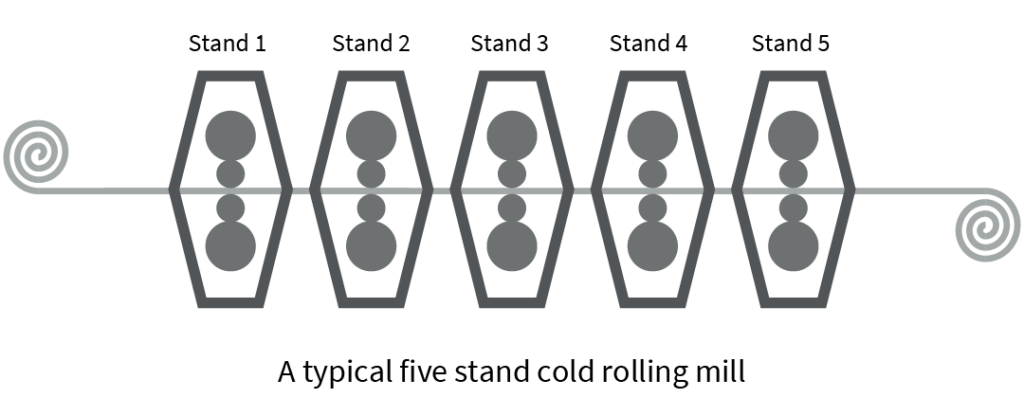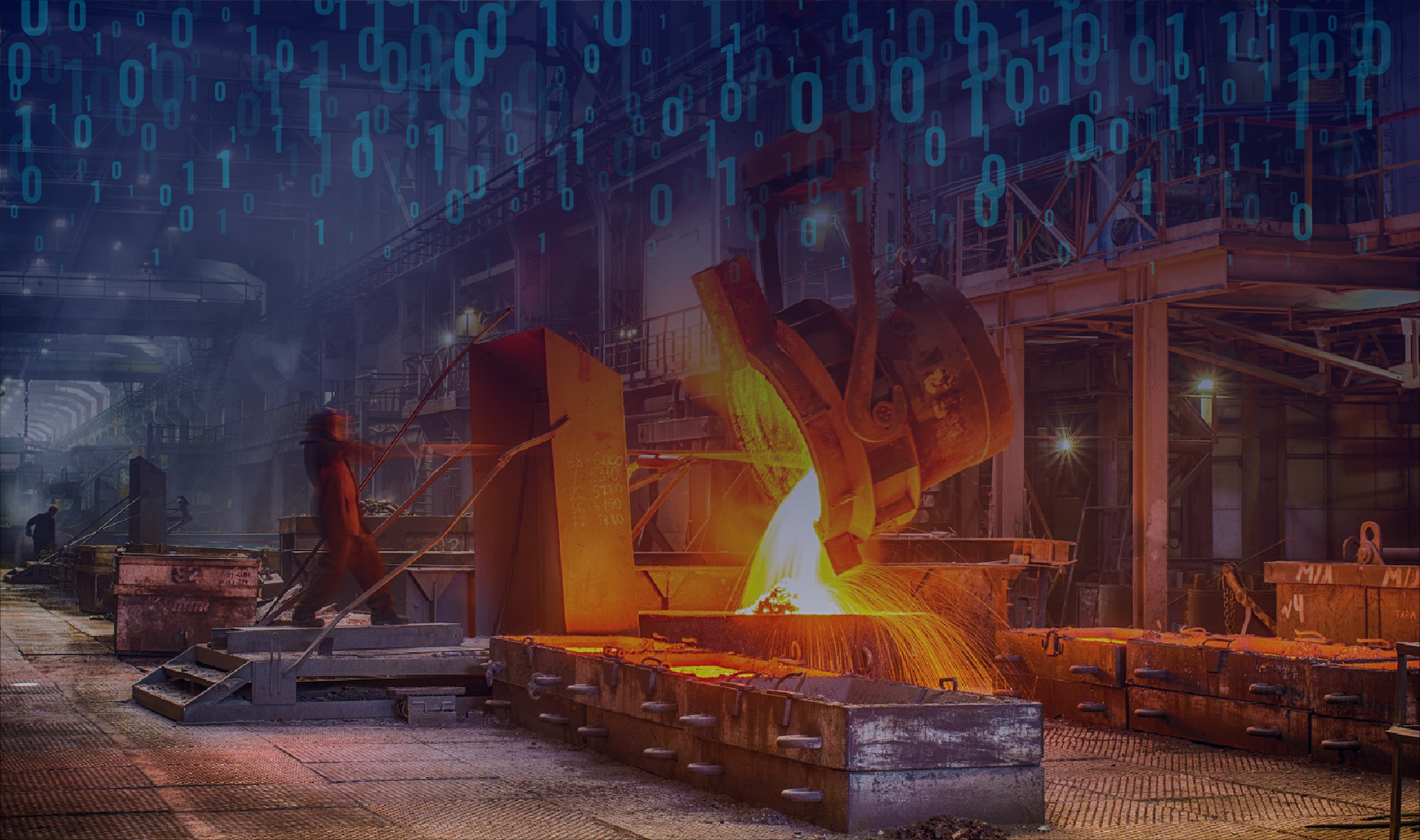Automating strip break classification in a cold rolling steel mill using machine learning
Key takeaways:
- Using advanced analytics technologies such as AI & ML, steel manufacturers can automate the classification of strip and weld breaks in a cold rolling tandem mill.
- The automation of this classification reduces manual efforts and the opportunity costs associated with the delays caused by manual analysis of data.
- Having a near real-time window into the causes of strip breaks allows process engineers to make upstream parameter changes that can have a tremendous impact on the roughly $3.5 M lost every year to this issue.
Introduction
Cold rolling of sheet steel is one of the most common steel manufacturing processes in the steelmaking value chain. Cold-rolled sheet steel is used in nearly every aspect of the physical world that we interact with – such as automotive body structures, residential and commercial construction, furniture, home appliances, lighting fixtures, water heaters, and many others.
As you can imagine, to maximize profitability and keep up with ever-increasing demands, cold rolling needs to be a continuous 24/7 non-stop process. One of the major impediments that can cause these engines of creation to come to a halt is the occurrence of strip breaks. These are physical tears that cause the steel sheet to break apart as it passes through the rollers of the cold rolling mill. The breaks are caused by a variety of reasons such as weak welds, surface defects, the tensile stress exceeding tolerance limits, among others.
The challenge here is that when a strip break occurs, it is immensely difficult to diagnose the cause and address it in a timely manner. Root cause analysis and classification require manually extracting collected data on tension, current, torque, and other parameters leading up to the break, and then applying human interpretation to these signal traces from multiple systems. This information is then compared with photographic or video evidence from all the mill stands and the welding stations to which subject matter expertise is applied to arrive at classification. Despite investing effort in this time-consuming process, the classification may not even be accurate.
This has compelled steelmakers such as AM/NS Calvert to explore technologies that can automate this time and resource-intensive process. But to understand the AI / ML solution that was applied, we must understand the various factors that make this a difficult challenge to tackle.
The problem
To get a sense of the scale and scope of the problem consider this: strip breaks account for 10-15 days of cumulative annual downtime in a cold rolling mill. In the AM/NS Calvert tandem cold rolling mill, the annual cost attributable to strip breaks and weld breaks in the last year was $3.5 M which includes lost production time and yield loss. In addition, classifying a strip break typically requires 8-man hours a week of a skilled data or process engineer at a cost of $100 K/year.
The interval of time between the onset of conditions that lead to a strip break and the break itself is small, typically less than 20 seconds. In a tandem cold mill, four or five mills (also referred to as rolling stands) are operating in tandem introducing the complexity of various levels of strip tension and roll speeds, as the thickness of the steel decreases from stand-to-stand, and therefore the operating parameters – such as RPM, torque, current, tension – differ throughout the process.
Sensors capture 100s of process variables relating to the five cold rolling mill stands at an interval of 10 milliseconds. That’s a lot of multivariate process data that needs to be analyzed quickly. Let’s look at the methodology we used to analyze this data in the next section.
Falkonry Approach
Falkonry’s Time Series AI platform was employed to automatically discover, detect, and classify the complex waveforms of the tandem mill’s strip breaks. Operational and non-operational parameters denoting steel grade, width, and thickness were ingested into the Falkonry platform. This data, which included historical strip breaks along with ground truths formed the basis of training and validating the classification model. Along with all the process variables, there are indicator variables that inform on which stand the break occurred and precisely when. These indicators help in identifying the time period when the break started, and the corresponding data for the break classification. For this project, two rolling stands (no 3 and no 4) were chosen based on the frequency and number of strip breaks available for the stands. A classification model was trained for these stands and upon validation, the model was put into live operation for real-time classification.

When a live strip break occurs, data 10 seconds before and 5 seconds after the break for all signals of all mill stands, gets packaged as a parquet file and sent to Falkonry in near real-time. Soon after ingesting this parquet file, Falkonry’s live models produce strip break classification output in the form of cards within a customized dashboard. Each card displays the signals used in the model as well as the indicator signals that denote whether it is a strip break or weld break. For each strip break instance, Falkonry provides the analytical tools to compare the selected strip break’s distributions to other existing classifications both in the value and frequency domain for comparative analysis. Falkonry also provides the ranked contribution scores of model signals for this strip break. These contribution scores help diagnose and pinpoint the cause and number of occurrences of a particular type of defect.
A Smart Manufacturing Profile (structured information model) for the tandem cold rolling mill was created which includes physical, operational, and performance parameters of the process. This SM Profile can be utilized to make deployment across other mills easier, improving the scalability of the solution using transfer learning.
Conclusion
Falkonry drastically reduces the delay between the occurrence of a strip break and its classification.
The reduced time for classification, along with the explanation of root causes delivered by the Falkonry AI application can be utilized by subject matter experts to mitigate upstream causes. For example, if it was consistently noticed that surface defects were responsible for most of the strip breaks, an input parameter in say an upstream pickling process can be changed, or greater quality control can be implemented upstream to reduce further occurrence. This drastically reduces downtime and results in indirect energy savings as the amount of scrap produced during strip breaks gets reduced as well.
The time of a skilled data or process engineer that would’ve gone into manually analyzing data is freed up and can be put to better use for continuous improvement. Without Falkonry the rate at which the results of the analysis are deployed is slower than the rate at which problems occur. This means that until the causes are found, a few more instances of breaks attributable to that particular cause already occur in the lag period. Instead, with Falkonry, a real-time dashboard gives improved visibility into the mill operations and improves workflows. Lastly, the SM Profiles that get created can be used to replicate the solution in other mills, improving scalability.





